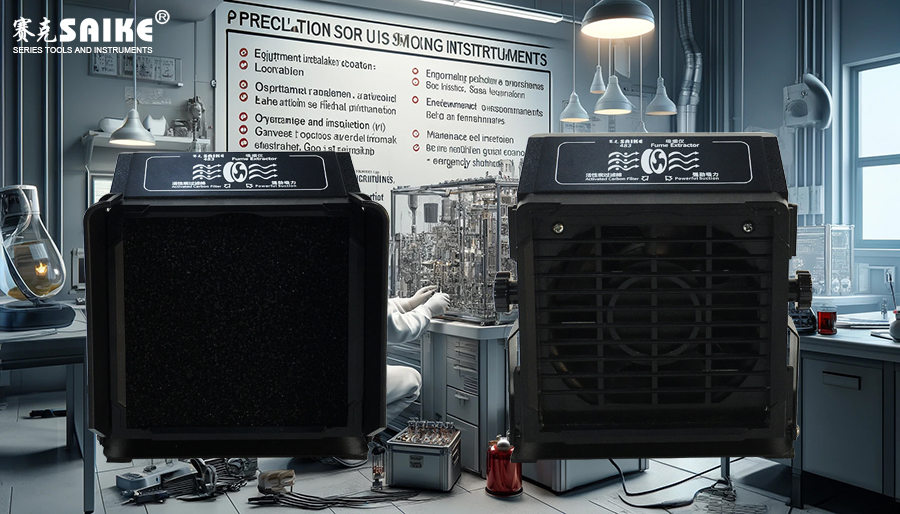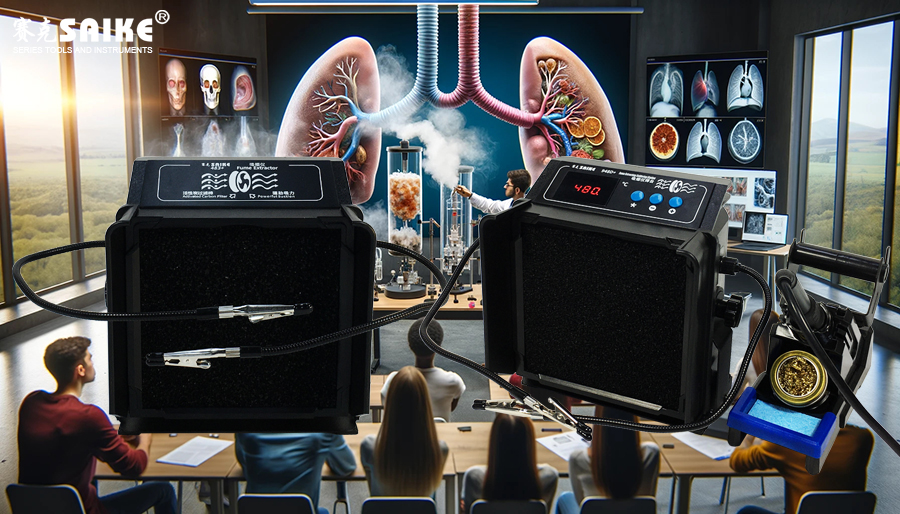
SK-YJ000XYY-KP 100011
The key precautions for using smoking instruments lie in ensuring the correct operation and safe use of the equipment. Here are some basic considerations:
I. Equipment Installation and Location
1.Correct Installation: Ensure that the smoking instrument is properly installed according to the manufacturer’s instruction manual. Incorrect installation may affect the performance and safety of the equipment.
2.Appropriate Location: Place the smoking instrument close enough to the smoke source (usually recommended no more than 2 feet away) to maximize smoke capture efficiency.
3.Avoid Obstacles: Make sure there are no obstacles around the air intake and outlet of the smoking instrument to prevent airflow obstruction.
II. Operational Safety
1.Follow Operational Guidelines: Always follow the manufacturer’s operational guidelines for equipment use and do not attempt to modify or overload the equipment.
2.Wear Appropriate Personal Protective Equipment: Even when using a smoking instrument, operators should still wear appropriate personal protective equipment (such as safety glasses, masks, etc.) when performing tasks that may generate harmful smoke.
3.Avoid Flammable and Explosive Materials: Keep the work area away from flammable and explosive materials to avoid fires or explosions caused by the heat source of the smoke extractor.
III. Maintenance and Inspection
1.Regular Maintenance: Perform regular maintenance according to the manufacturer’s recommendations, including inspection, cleaning, and replacing filters. This not only helps maintain equipment performance but also extends its service life.
2.Check Power Supply and Cables: Regularly inspect power cords and connections to ensure there is no wear or damage. Damaged wires can cause electrical failures or even fires.
3.Monitor Filter Status: If the filter is clogged, it will affect the efficiency of the smoking instrument. Once suction weakens or smoke emissions increase, check and replace the filter.
IV. Environmental Considerations
1.Consider Ventilation: Although smoking instruments can reduce harmful indoor smoke, good ventilation is necessary to help control and dilute any escaping smoke.
2.Temperature Control: Ensure the working environment is maintained at a moderate temperature to avoid affecting the equipment’s performance due to excessively high or low temperatures.
V. Accident Response
1.Emergency Shutdown Procedures: Ensure that all operators understand how to safely stop the smoking instrument in case of an emergency.
2.Fault Response: Develop a fault response plan that includes handling equipment failures and designating emergency contacts.
By following these precautions, the safe and effective use of smoking instruments can be ensured, while protecting the health and safety of operators.


